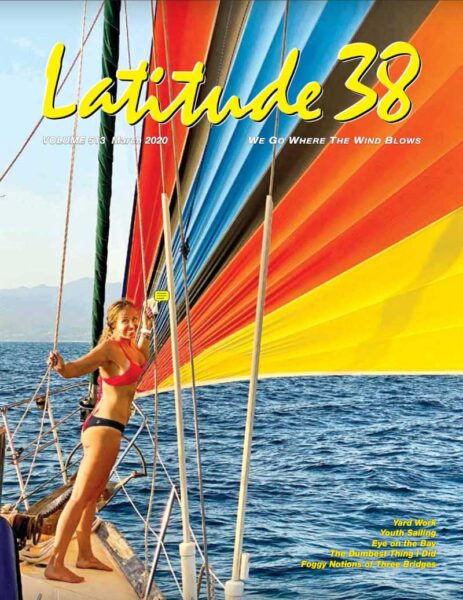
Weather Forecasting for Cruisers: GFS vs. ECMWF
Hurricane Hilary barreled up the west coast of Baja with a drumbeat of threatening headlines and dire predictions. It did cause havoc and destruction in several communities, many of which are still struggling to recover. However, as our Monday story told, for most people the bark was worse than the bite. For sailors trying to figure out how to understand and prepare for forecasts, it could be helpful to really see what happened in various harbors and how the two primary weather models compared. Thankfully, cruiser Jason Hite of the Caribbean 50 Volare took some time to create a post-storm analysis of the GFS vs. ECMW weather models.
We connected with Jason, who posted the following on the Sea of Cortez Sailors and Cruisers Facebook Group, “Here is how the forecast vs. actual turned out. Lots of people say ECWMF (European Centre for Medium-Range Weather Forecasts) is the best, but these results will show you why I like GFS (Global Forecast System). It’s normal for PE (Puerto Escondido) to gust higher than forecast due to the topography of the area. I didn’t see anybody post numbers for Concepcion. If you’d like to see your area covered in the next storm, please comment below.”

Jason also summarized his time spent in Mexico over several summers.
“My experience cruising in Mexico in the summer:
I summered in BOLA (Bahia de los Angeles) in 2016, 2017, 2018 (solo).
2019 I summered in Loreto.
2020 I spent COVID summer in Barra de Navidad.
2021 I spent most of summer in Loreto; just popped up to BOLA for a couple of weeks for the now forbidden full moon party.
2022 Summered in Loreto
2023 Banderas Bay
When I summered in Barra I was worried we might see a major storm. It happened to Zeehag! Luckily there was a cruiser there that said he was cursed with fair weather, and we should expect no major storms that summer. Sure enough, we had one hurricane; I didn’t even take the shades off Volare — it just rained for three days and caused lots of flooding. That guy’s boat is in La Cruz now, so I’m hopeful his good weather karma continues!!!”

While the drama felt by most people who read the Hurricane/Tropical Storm Hilary weather predictions was less than anticipated, it was wise for all sailors in the path of the storm to take precautions. Both the European ECMWF model and the American GFS model can be wrong, since Mother Nature has a mind of her own. Hurricane Hilary turned out to have smaller impacts than anticipated, while Hurricane Dora had far worse impacts than anticipated in Lahaina.
As sailors know, it’s always good to keep a weather eye out. What’s your experience with ECMWF and GFS, and how do you receive your weather while voyaging mid-ocean? Do you have a preference for ECMWF or GFS?

Sw of La Paz Hilary was 125kts continuous and gusts to 145; 44 ft seas at center..948mb
These are both wonderful tools that- if paid attention to- give the modern mariner a considerable advantage to planning and safely executing a passage offshore . I helped on a delivery back from Hawaii in the days of Sextant and chronometer, and the only weather info we could get was when we got our time check from UTC. We got the call that there was a ” shearline” for all mariners in the eastern Pacific- us. A shearline turned out to be the meeting of a North Pacific low with a Hurricane coming off of Mexico. We were caught in the middle and got our butt’s kicked. These models would have been a godsend- despite possible errors.